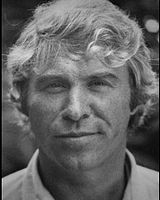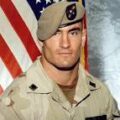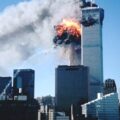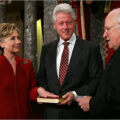 Danny Casolaro Journalist, Freelance Writer
Danny Casolaro Journalist, Freelance Writer
Danny Casolaro Shortly before his death, Casolaro told people that he was nearly ready to reveal a wide-ranging conspiracy spanning the Inslaw case, Iran-Contra, the alleged October Surprise conspiracy, and the closure of BCCI.[7] David Corn writes in The Nation that the papers Casolaro left behind reveal few clues, except that he was in over his head, but was tenacious.[8]
His papers included old clippings, handwritten notes that were hard to read, and the names of former CIA officers and arms dealers. Corn writes that the notes show Casolaro was influenced by the Christic Institute and that he had pursued material fed to him by a reporter who worked for Lyndon LaRouche.[8] Richard Fricker writes in Wired that Casolaro had been led into a “Bermuda Triangle of spooks, guns, drugs and organized crime.”[9]
 Danny Casolaro Journalist, Freelance Writer
Danny Casolaro Journalist, Freelance Writer
Danny Casolaro Shortly before his death, Casolaro told people that he was nearly ready to reveal a wide-ranging conspiracy spanning the Inslaw case, Iran-Contra, the alleged October Surprise conspiracy, and the closure of BCCI.[7] David Corn writes in The Nation that the papers Casolaro left behind reveal few clues, except that he was in over his head, but was tenacious.[8]
His papers included old clippings, handwritten notes that were hard to read, and the names of former CIA officers and arms dealers. Corn writes that the notes show Casolaro was influenced by the Christic Institute and that he had pursued material fed to him by a reporter who worked for Lyndon LaRouche.[8] Richard Fricker writes in Wired that Casolaro had been led into a “Bermuda Triangle of spooks, guns, drugs and organized crime.”[9]
 Danny Casolaro Journalist, Freelance Writer
Danny Casolaro Journalist, Freelance Writer
Danny Casolaro Shortly before his death, Casolaro told people that he was nearly ready to reveal a wide-ranging conspiracy spanning the Inslaw case, Iran-Contra, the alleged October Surprise conspiracy, and the closure of BCCI.[7] David Corn writes in The Nation that the papers Casolaro left behind reveal few clues, except that he was in over his head, but was tenacious.[8]
His papers included old clippings, handwritten notes that were hard to read, and the names of former CIA officers and arms dealers. Corn writes that the notes show Casolaro was influenced by the Christic Institute and that he had pursued material fed to him by a reporter who worked for Lyndon LaRouche.[8] Richard Fricker writes in Wired that Casolaro had been led into a “Bermuda Triangle of spooks, guns, drugs and organized crime.”[9]





